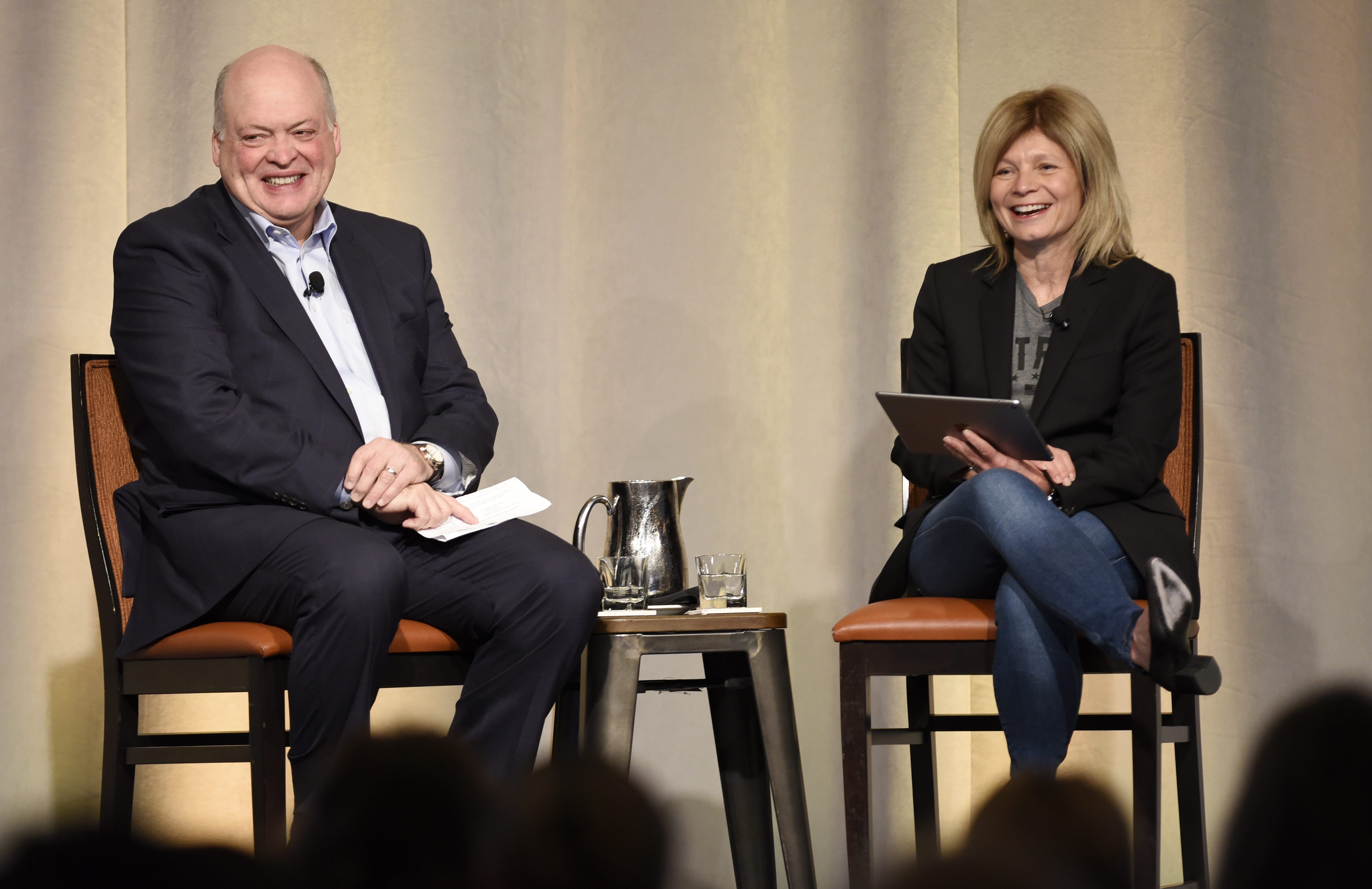Ford realigns top executives, setting up possible CEO succession

Ford Motor Co. CEO Jim Hackett announced yet another realignment of his top executives. And experts say a succession plan is becoming clear.
Ford executives Joe Hinrichs and Jim Farley would become the only two presidents of the company on May 1, when Marcy Klevorn, currently president of mobility, moves to a transitional role ahead of her planned October retirement. The shift sets up Farley or Hinrichs to succeed Hackett when the CEO leaves the company.

The moves begin to answer questions some analysts and investors have raised about the succession plan at the Dearborn-automaker. Hackett, appointed CEO nearly two years ago, has been ambiguous about his tenure at Ford. In a recent interview with The Detroit News, Hackett said the company will have options for the next CEO when he leaves.
"I would have viewed those two guys as in line to probably replace Jim Hackett," said David Cole, a longtime observer of Ford and the Detroit-based industry. "They're both very competent leaders. It's pretty clear probably who the best replacements for Hackett are."
Farley, currently president of global markets, would become president of new business, technology and strategy. Joe Hinrichs, currently president of global operations, would be president of automotive, overseeing global operations and product development, among other things. Hinrichs' wing of the company would generate revenue while Farley's work on autonomous vehicles and mobility spends it.

"In the past two years, we have made tangible progress in improving the fitness of our business, overhauled our regional strategies, created a winning product portfolio, and are working to transform Ford to succeed in an era of profound change and disruption," Hackett said in a statement. "With this strong foundation in place for our auto and mobility businesses, we can now accelerate our transformation."
Hackett has said repeatedly that 2019 is a year of growth for Ford. He's guiding the automaker through $25.5 billion in cost cuts and an $11 billion global restructuring. In the U.S., Ford is in the middle of salaried job cuts, which would wrap by the middle of this year.
Klevorn's retirement and the subsequent shifts further trims Hackett's direct reports, something he moved to flatten during his first months as CEO.
Farley essentially absorbs the duties left by Klevorn. Starting in May, he'll oversee global strategy as well as Ford Smart Mobility and the development of the automaker's autonomous vehicle business. He'll also oversee corporate partnerships and global data insight and analytics.
His global markets responsibilities shift to Hinrichs. The Ford veteran will oversee all product development, purchasing and manufacturing as well as marketing. Hinrichs also will be in charge of both the Ford and Lincoln brands.
Hinrichs' new role comes as Hackett pushes the company to hit 8% profit margins globally and 10% margins in North America. He assumes the role amid sweeping global restructuring, including plant closures on two continents and job cuts around the world.
Farley takes control of the autonomous vehicle unit not long before the company plans to launch its first fully self-driving vehicles in 2021.
The roles play to the two executives' strengths, Hackett said. Hinrichs will oversee numerous new-product launches planned for the next year and a half at Ford. Farley, credited with starting the turnaround and rebranding at Lincoln, has a "feel" for what customers want, Hackett said. That will boost the autonomous vehicle and mobility development.
"It's interesting how they divided it," said Michelle Krebs, automotive analyst for AutoTrader. "Joe's in charge of things today that make the money for the things that Jim's going to do."
Farley and Hinrichs are Ford and auto industry veterans.
Hinrichs has worked at Ford since 2000, when he was plant manager of the Van Dyke Transmission Plant in Sterling Heights. By 2002, he was appointed executive director of materials planning and logistics, and in 2006 he was vice president of North American Manufacturing.
He ran Ford's Asia Pacific and Africa, and was president of the Americas before being appointed head of global operations in 2017. Hinrichs was one of the executives considered to replace former Ford CEO Alan Mulally in 2014, though he was passed over for former CEO Mark Fields, who was fired as CEO in May 2017.
Farley joined Ford in 2007, when he was recruited away from Toyota. He was put in charge of global marketing as well as Ford's Canada, Mexico and South America operations shortly after joining Ford, and in 2010 was appointed to run global marketing, sales and service — the company's first-ever single global leader for marketing.
He led the turnaround of Ford's Lincoln brands, and from 2015 to 2017 ran Ford Europe, Middle East and Africa. He was appointed head of global markets in 2017.
Krebs cautioned that even as the executives move into the top two roles in the company, there's no sure bet that Hinrichs or Farley would succeed Hackett as CEO.
"One never knows if they're going to go outside for that," she said. "A lot could happen in the next few years. But it would look like it will be one of these two."
ithibodeau@detroitnews.com
Twitter: @Ian_Thibodeau